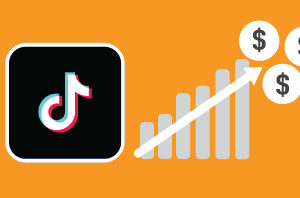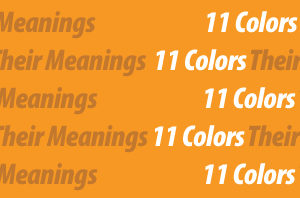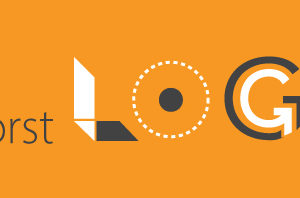
Why do a good part of the major social media networks use blue? As experts in brand color, we at IDeas BIG would like to look into this phenomenon that has been sweeping social media since the birth of MySpace.
Logo Analysis: Social Media Color Schemes
Recently shared by a study in Business to Community, it is important to look at the history of logos in social media, and the decisions behind the choice. In this, we would like to share the insight offered in “True Blue Social Media: A Logo Analysis.”
Facebook. Twitter. LinkedIn. The titans of the social media world. Although they differ in many respects, they share one commonly overlooked quality: a penchant for blue logos. This is no mere coincidence. According to various studies, blue is the most popular color in the world. But this can’t be the only reason blue is such a popular social media color, can it?
According to the study “Exciting Red and Competent Blue: the Importance of Color in Marketing,” there are actually quite a few reasons for the color’s popularity. The study goes into detail in regards to the ‘personalities’ we associate with various colors. Most of these associations are taught to us by society, rather than being inherent in the colors themselves.
For a marketer, it is incredibly important that the color personality of your logo is in line with your own brand personality. Blue tested as the color of intelligence, communication, and trust.
The color blue is defined as “the primary color between green and violet in the visible spectrum.” Facebook, Twitter, Instagram, and a plethora of other websites utilize various shades of the color blue for marketing purposes. But what makes the color blue such a popular marketing tool?
What Does Blue Mean?
Blue is a calming, relaxing color that accompanies red and yellow as primaries. Sometimes called “the Nirvana color,” blue symbolizes the comfort, sky, water, sleep, the mind, trustworthiness, and safety (think Police Officer uniforms). Most importantly, blue represents communication – which makes sense in regards to websites designed for communication. Blue promotes interaction. Most other colors tend to distract the consumer, whereas the color blue disappears as a transparent background. Microsoft Word has a blue color scheme, as do most online advertisements. Mac OSX has two themes: graphite and aqua (which is the default theme).
Color Choice and Reasoning
Whether the reason is due to the sense of welcoming, the evolving sense of transparency as the consumer reads through the website, or a symbolic color, each website chooses their design for a reason. Twitter’s mascot is a bird, so it only makes sense that their blue represents the sky on a perfect day. Facebook is blue because the founder, Mark Zuckerberg, is red-green colorblind, so blue is the richest color for him. The list below shows the Hex and RGB numbers of popular social networking websites. MySpace and Linkedin, now both are designed with primarily black color schemes, used to be blue and are thus included. Following is an analysis of the color choices in social media leaders:
- Facebook
- Hex:#3B5998
- RGB: 59, 89, 152
- Twitter
- Hex: #00ACED
- RGB: 0, 172, 237
- Instagram
- Hex: #517FA4
- RGB: 81, 127, 164
- Tumblr
- Hex: #32506D
- RGB: 50, 80, 109
- Skype
- Hex: #12A5F4
- RGB: 18, 165, 244
- WordPress.com
- Hex: #21759B
- RGB: 33, 117, 155
- Formspring
- Hex: #4BB1E6
- RGB: 75, 177, 230
- Pandora
- Hex: #336699
- RGB: 51, 102, 153
- MySpace
- Hex: #6699CC
- RGB: 102, 153, 204
- Linkedin
- Hex: #4875B4
- RGB: 72, 117, 180
Blue in Marketing
As a marketing tool, blue follows a pattern designed to attract customers. This pattern can be traced in three steps:
- Attract with a welcoming color. A blue website wants its viewers to feel welcome. They are stepping into a friendly environment that is not intimidating nor boring.
- Portray safety and reliability. With the primary color of a website being blue, the website is thus designed to whisper to the customer, “Look how reliable I am. I am safe, as well as both light-hearted and professional. I am comfortable. Look at me.”
- Disappear into background. Now that the color has done what it was designed to do, it can now take a few steps back to allow the reader to become completely enveloped in the information they are receiving. How often do you pay attention to the blue borders of your Facebook window or the sidebars of Microsoft Office? Exactly.
Blue in Your Web Design?
What do you want to your website to portray? Natural, comfortable, and reliable elements are all portrayed in the color blue. Any color will work for a website when used in an efficient way, but if you are looking to portray the specifics of communication, then blue is the way to go. We would like to thank BlueLeadz for sharing this article, titled “Why Are Social Media Sites Blue?”
Should you design your brand using this color? Do you see this as the future of your branding efforts? Please Comment, Bookmark, or Share with your colleagues using the tools below.
2 Comments
Pingbacks
-
[…] follow-up to our Color in Social Media, we would like to look at the trends in color that drive consumers to choose products and services […]
-
[…] So it makes sense why blue is the color of choice. Besides being seen by people who are colorblind, it is also the same color as the sky, water and all things comforting. Blue even symbolizes safety, trust, the mind and sleep. Below are a few reasons why blue attracts customers: […]




